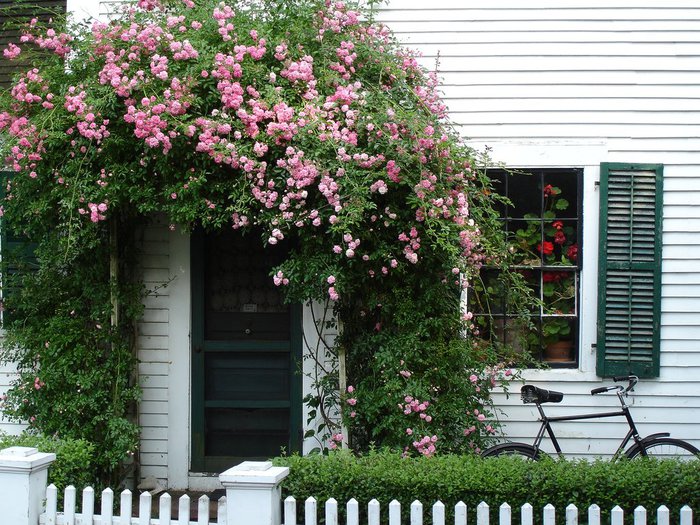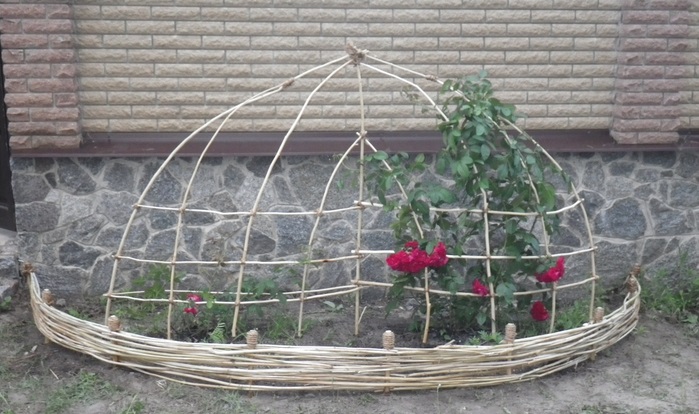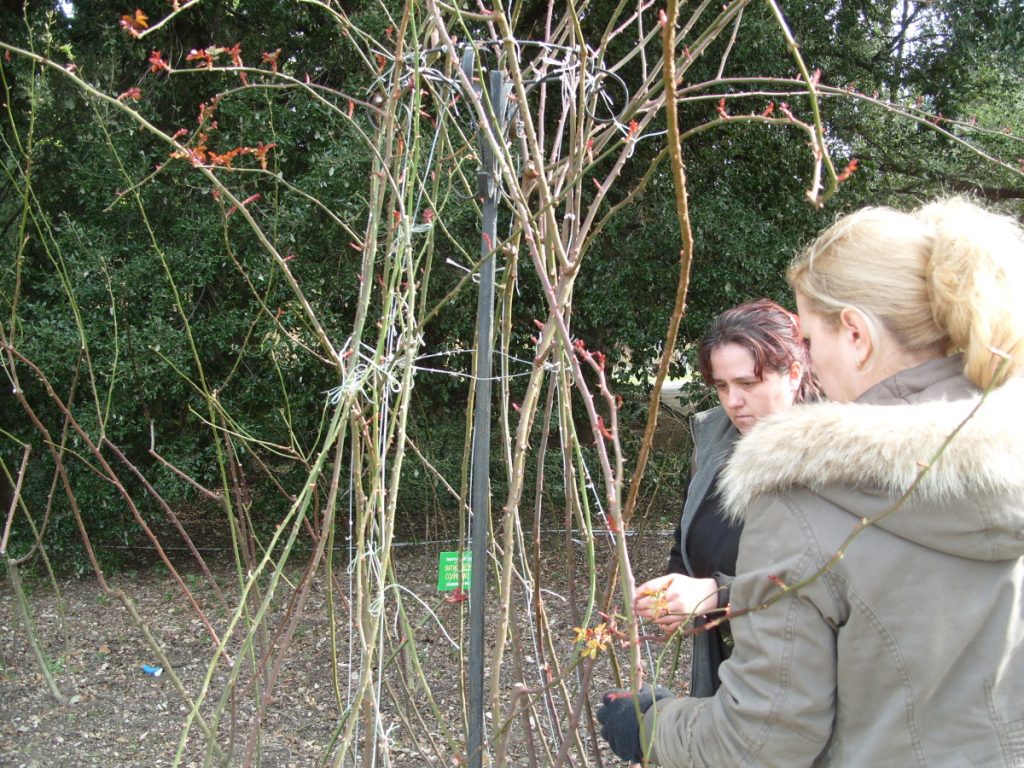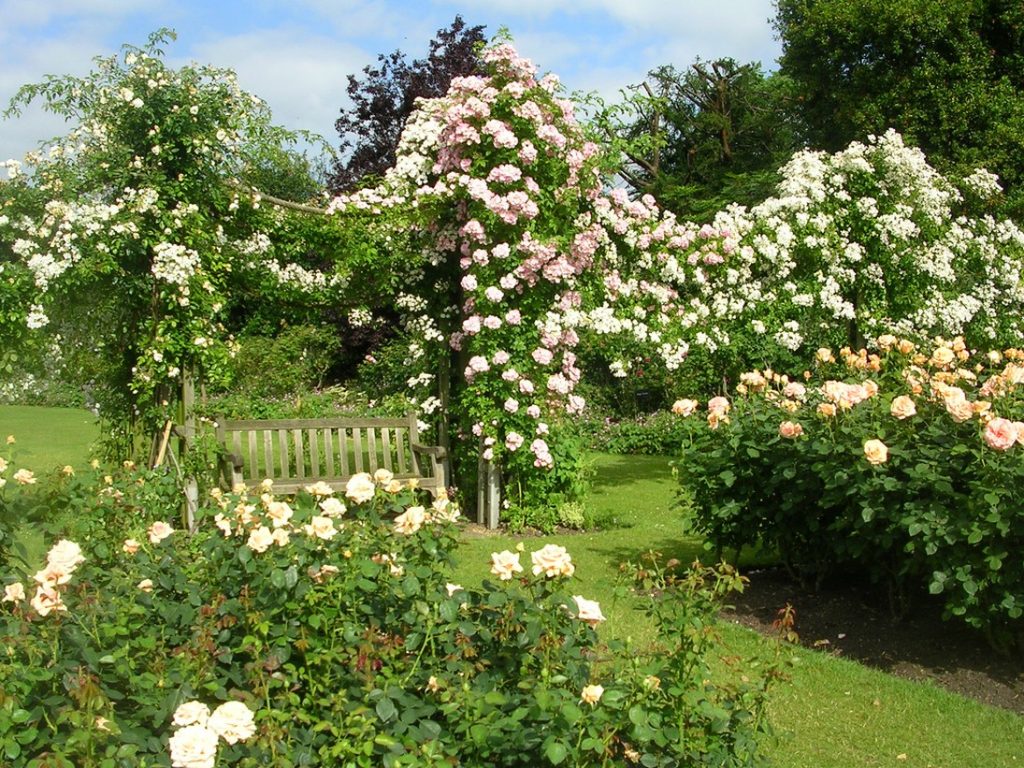How to make supports for climbing roses
Content
Seat selection
Using climbing roses, summer residents often want to create a shady resting place, arrange an entrance to a plot or alley, if space permits, they decorate fences and mask unsightly buildings with them. With the help of vertical supports, the rose is made the central figure of the flower garden or even the entire garden.
But when choosing a place for such a design, you need to remember that a rose is a delicate plant with its own needs and preferences. Therefore, it should be planted where it will be possible to provide a sufficient amount of light, where water will not accumulate, flowing from the entire area, where groundwater does not come close to the surface. Otherwise, if you plant a rose in the wrong place for it, then you will not have to enjoy the wonderful flowering, but to treat it for many diseases, admiring only the prepared support, not entwined with lush branches.
Climbing roses are divided into shrubs and ramblers, which are very different from each other. So most varieties of scrubs have powerful, thick, practically rigid shoots that grow up to 2 meters or more. They have an amazing aroma and large flowers. And flower growers, among other advantages, especially note the small number of thorns. At first glance, their bushes do not require support for growth, but they do need it, because heavy flowering branches can break under their own weight and the actions of the wind. The support will not only support the shoots, it will help them look really great.
Rambler without support will grow poorly and will not look at all the way they deserve it. Their thin flexible branches grow up to 4.5 meters, they are covered with small, abundant flowers, which look very decorative on supports of fanciful or simpler shapes.
In addition to the place convenient for the rose itself, the place should allow fixing the support so that it can withstand not only the weight of the rose, but also can withstand strong gusts of wind. If the roses are supposed to be put on the wall, then the support should be at a distance of 25 cm from it, a smaller distance will not provide air circulation.
Video "How to make supports yourself"
From the video you will learn how to independently and easily make supports.
Varieties of supports
The forms of the supports are very diverse, but at the heart are several basic varieties, which the designers play around depending on the desired result. The main ones are arch or pergola; trellises, which can be in the form of a vertical wall, pyramid, ladder, or just a lattice; pillars or monuments.
When constructing a support, it must be remembered that climbing roses themselves do not curl and do not cling to the support, they must be consistently directed in the right direction and fixed on the support. In addition, there is a very important secret of flowering - flowers are formed not on the main shoots, but on short, usually, branches that extend from them at a right (or almost) angle, and these young branches always grow upwards.Therefore, the main shoots should be placed horizontally or at least at an angle of 45 degrees to the ground line. This must be remembered when braiding the support. You cannot direct the shoots vertically upwards, then the flowers will appear somewhere high, there will be few of them, flowering from June to September will not work. And, of course, the bush must be freed from the already faded roses, which stimulates the formation of new buds.
You need to build a support before planting a plant, so that later you do not damage the roots of a rose already growing in this place.
Arch
Arches are built at the entrance to the site, to the gazebo, house or some area of the park. A do-it-yourself rose arch is usually made of wood or metal. The tree always looks great among flowers, it is used to support massive stems, and metal structures are often twisted with thin delicate shoots. Wooden arches covered with varnish or paint can last more than 10 years, and metal arches at least 15 years.
Support pillars must be fixed in the ground thoroughly, in some cases they even make a concrete base. For the arch, a vault is made, and for the pergola, a lattice (most often wooden) is installed according to the type of roof. The pillars must be at least 1.80 m high, wooden blocks or metal rods are installed around them in a circle at the same distance, they are fixed on the base and the upper beam. It is along them that the growing shoots of roses will be directed, they will curl on a pole in a spiral, located almost horizontally. Two shoots can be braided towards each other, they will be covered with young twigs with flowers.
For the pergola, you can use a removable rope net or a lattice made of wooden slats. This design will make it easier to cover the bush for the winter, its main part will simply be removed along with the trellis or net.
Trellis
The trellis is placed against the wall or in the middle of the garden, separating different zones. It can be just a rectangular structure, consisting of a sturdy frame, usually wooden, and a lattice located (fixed) within this frame. Summer residents usually use metal wire or wooden planks for the lattice, which look great among the greenery of the rose, if painted with white paint. Less commonly, plastic purchased gratings are used. The trellises are arranged in the form of a fan or give them a bizarre shape, which the rose bush itself acquires, hiding the trellis under it.
You can simply dig vertical posts of the required height into the ground, usually from one and a half meters or more. Holes are made in them along the entire height every 20 - 50 cm from each other, nails curved with hooks are inserted with the help of pliers. A wire is pulled over these resulting hooks - and this is the simplest frame. It must be disinfected and painted.
On the trellis, it is not necessary to place roses on one side, shoots can be threaded through the lattice, then a blooming wall will turn out on both sides. This is not very convenient for caring for covering roses - in the fall it will be difficult to untangle them in order to fold and cover for the winter, and if the roses do not need such insulation, then the double-sided flowering trellis will look very impressive.
The netting, laced with the shoots of a climbing rose, can be an example of a simple trellis, but it can also be a magnificent hedge, completely hiding under the leaves and flowers of a lush plant.
Pillar
The pillar as a support for roses can be of any height, be in the middle of a flower garden, thus placing it in two planes, or it can stand near a bench or a gazebo, delighting the eyes of the resting owners and arousing the envy of their guests. In parks, they make an excellent composition, placing the pillars at the same distance from each other along an alley or path, connecting them with a beautifully sagging rope or chain. Roses, twisting pillars, picturesquely hang from these chains in blooming garlands.
The pillar can be made of any material, in summer cottages it is, as a rule, wood, and in parks there is anything you like - wood, metal, stone. But around this central support, metal or wooden horizontal circular fragments should be located, on which the shoots weaving along them will be fixed, so that the branches spiral upward, and then also go down, if the length of the shoots allows.
According to this principle, not just pillars are erected, but pyramids or other elongated structures, usually referred to as monuments.
Supports, whatever their shape, are designed not only to support climbing roses, but also to help them look in all their amazing beauty, decorating the garden with themselves.
Video "Different types of supports"
From the video you will learn about the common types of supports.



